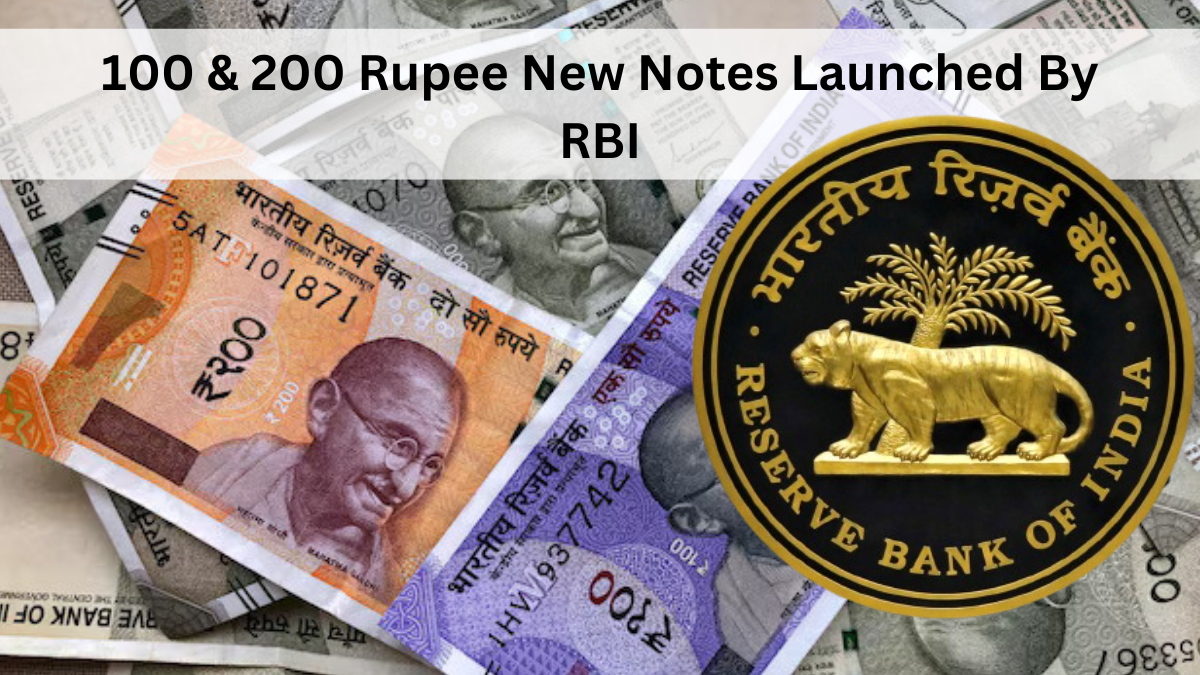The Reserve Bank of India (RBI) has recently unveiled new ₹100 and ₹200 currency notes, bringing with them enhanced security features and fresh designs. But what does this mean for the old notes? Will they remain valid, or should you start exchanging them? In this comprehensive guide, we’ll explore everything you need to know about these new banknotes, from their security features to their practical impact on everyday transactions.

Summary Table: Key Information on New ₹100 and ₹200 Notes
| Aspect | Details |
|---|---|
| What’s New | Enhanced security features and updated designs on the new ₹100 and ₹200 notes. |
| Old Notes | Old ₹100 and ₹200 notes remain legal tender and can be used as usual. |
| New Design Features | ₹100: Lavender base color, “Rani ki Vav” motif. ₹200: Yellow base color, “Sanchi Stupa.” |
| Security Enhancements | Watermarks, security threads, latent images, microletters, and UV features. |
| Where to Learn More | Official RBI Website |
Why Did the RBI Launch New ₹100 and ₹200 Notes?
The RBI periodically updates currency designs to improve security and make it harder for counterfeiters to replicate notes. The new ₹100 and ₹200 notes are part of this ongoing process. Key reasons for launching these new notes include:
- Counterfeit Prevention: Incorporation of cutting-edge security features makes duplication difficult.
- Ease of Identification: New color schemes and design elements help the public easily differentiate between denominations.
- Preserving Cultural Heritage: Showcasing India’s rich heritage through motifs like “Rani ki Vav” and “Sanchi Stupa.”
Design and Security Features of the New ₹100 Note
The new ₹100 note features a lavender base color, setting it apart from other denominations. Key design and security features include:
- Front: Mahatma Gandhi portrait, RBI seal, and numeral “100” printed in raised ink.
- Back: “Rani ki Vav,” a UNESCO World Heritage site located in Patan, Gujarat.
- Security Features:
- Watermark with Mahatma Gandhi’s portrait.
- Security thread that shifts colors when tilted.
- Microletters spelling “RBI” and “100.”
- UV features and latent images visible only under special conditions.
Design and Security Features of the New ₹200 Note
The new ₹200 note has a bright yellow color and highlights the “Sanchi Stupa,” an ancient Buddhist monument in Madhya Pradesh. Notable features include:
- Front: Portrait of Mahatma Gandhi, with raised printing on “200.”
- Back: “Sanchi Stupa” motif celebrating India’s historical and religious legacy.
- Security Features:
- Watermark and color-changing security thread.
- Latent images that appear when the note is tilted.
- Microprint visible under magnification.
- UV-sensitive elements ensuring authenticity checks under ultraviolet light.
What Happens to Old ₹100 and ₹200 Notes?
Contrary to public speculation, the introduction of new notes does not mean the withdrawal of old ones. The RBI has clarified that:
- Old notes remain valid. There is no requirement to exchange them.
- Both old and new notes will coexist. You can use either version in daily transactions.
- No demonetization. Unlike the 2016 demonetization, these changes are part of a regular currency upgrade.
This ensures a smooth transition without disrupting the economy.
Practical Advice: How to Identify Genuine Notes
With counterfeit risks always present, it’s essential to know how to spot a fake. Key checks include:
- Watermark: Hold the note up to the light to see the watermark.
- Security Thread: Tilt the note and watch the thread change color.
- Latent Image: Look for hidden numerals that appear when tilted.
- Microletters: Inspect the note closely under a magnifying glass.
- UV Light Test: Authentic notes have elements that glow under UV light.
For Businesses: Handling the New Notes
Business owners should take these steps to ensure smooth transactions:
- Train Staff: Familiarize employees with security features.
- Upgrade Equipment: Ensure POS machines and cash counters recognize new notes.
- Use Verification Tools: Invest in UV lamps and counterfeit detectors.
- Educate Customers: Share knowledge to prevent confusion at the register.
For Travelers: Tips on Handling the New ₹100 and ₹200 Notes
Traveling with the new notes? Here are a few tips:
- Carry Mixed Denominations: Rural areas may take time to adjust to new notes.
- Verify at Exchange Counters: Ensure authenticity when exchanging currency.
- Familiarize Yourself: Know security features to avoid counterfeits.
Frequently Asked Questions (FAQs)
-
Will old ₹100 and ₹200 notes be withdrawn?
No, both old and new notes will circulate simultaneously. -
Can I exchange my old notes for new ones?
There is no need to exchange old notes. They remain valid. -
How can I spot counterfeit notes?
Check for watermarks, color-changing security threads, and UV features. -
Are the new notes available at all banks?
Yes, the new notes are gradually being rolled out through banks. -
Why did the RBI change the note design?
To improve security, reduce counterfeiting, and preserve cultural heritage.
The introduction of the new ₹100 and ₹200 notes reflects the RBI’s ongoing efforts to strengthen currency security and preserve India’s rich heritage. With old notes remaining valid, there is no cause for concern. Familiarize yourself with the updated features, and rest assured that the financial system is more secure than ever.
For further details, visit the Official RBI Website.
For More Information Click Here